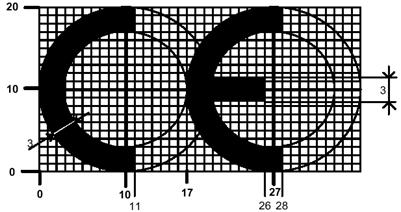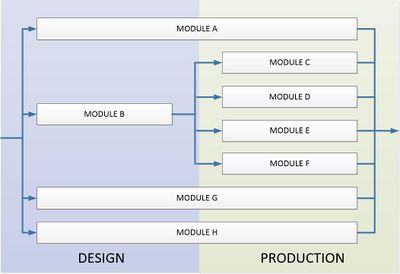CE marking
CE marking located on a product certifies that product meets the requirements set out in New Approach Directives of the European Union. The requirements apply particularly to safety, health and environmental users. CE marking means that the manufacturer or importer of a product meets the basic requirements of ESR (Essential Requirements). ERS are due to the requirements of the relevant Directives.
Steps which have to be taken to mark product with CE
To mark the CE product is necessary to take the following steps:
- Determine which directives apply,
- Determine the harmonized standards and basic requirements for health and safety that are applicable for a given product,
- Determine and select the notified body (if such a requirement poses a directive or if assistance and support are needed),
- Determine the appropriate compatibility assessment procedure,
- Make a product assessment,
- Attach the technical documentation,
- Prepare a declaration of compliance,
- Mark product with CE. The manufacturer (or a person authorized by him) has the task of place the CE marking on the product. In addition to the CE mark on a product should be placed the notified body number which made the assessment.
Modules for conformity assessment procedures
There are eight modules that apply to the design and production. Modules are different from each other in stages of development of products, mode of assessment and of a performance assessment.
- Module A - Declaration of conformity - internal control of production (design and manufacturing),
- Module B - Type test - a notified body issue a certificate of examination about the design stage complemented by module on the evaluation on the manufacture,
- Module C - Type compatibility - used with module B, manufacturer declares that the products concerned conform with the type described in the certificate of Type compatibility,
- Module D - Production quality assurances - used with module B, this module requires the participation of a notified body, which should approve and control the quality system of production, final inspection and testing,
- Module E - Product quality assurances - used with module B, this module requires the participation of a notified body, which should approve and control the quality system of final inspection and testing,
- Module F - Product verification - used with module B, the notified body shall oversee compliance with the certificate issued with module B, and issue a certificate of conformity,
- Module G - Verification of unit production - the notified body checks individual products and then issue a certificate of conformity,
- Module H - Full quality assurance - the notified body approves and oversees a quality system for design, manufacture, final inspection and testing
Examples of CE marking
- Toys: The CE mark can be found on toys, and it certifies that the toy meets the safety requirements of the Toys Directive.
- Medical Devices: The CE mark can also be found on medical devices, and it certifies that the device meets the safety and performance requirements of the Medical Devices Directive.
- Machinery: The CE mark can also be found on machinery, and it certifies that the machinery meets the safety requirements of the Machinery Directive.
- Electrical Equipment: The CE mark can also be found on electrical equipment, and it certifies that the equipment meets the safety requirements of the Low Voltage Directive.
- Personal Protective Equipment: The CE mark can also be found on personal protective equipment, and it certifies that the equipment meets the safety requirements of the Personal Protective Equipment Directive.
Advantages of CE marking
CE marking offers a range of advantages for both manufacturers and consumers. The primary benefit for manufacturers is that CE marking ensures that the product is compliant with applicable EU legislation and regulations. This makes it easier for manufacturers to sell their products throughout Europe. Additionally, CE marking provides the following advantages:
- Increased marketability in the EU: CE marking provides manufacturers a single market of 500 million consumers, making it easier to expand their business and increase sales.
- Improved product quality: By complying with EU regulations, manufacturers are able to ensure that their products are of a higher quality, which leads to improved customer satisfaction.
- Enhanced product safety: CE marking guarantees that products are safe to use and reduces the risk of liability for manufacturers.
- Reduced costs: CE marking eliminates the need for manufacturers to obtain individual certifications in each country, which reduces costs and saves time.
Limitations of CE marking
The CE marking is not without limitations, including:
- It only confirms the manufacturer’s or importer’s compliance with the requirements of the relevant directives. It does not guarantee that the product is safe or of good quality.
- CE marking does not apply to products that are not subject to the directives, such as medical devices, pharmaceuticals, and cosmetics.
- It does not cover the product's compatibility with other products, or with its environment.
- CE marking does not cover the product's usability or its ergonomics, and does not guarantee the product's life expectancy.
- The CE marking does not provide any kind of certification or guarantee that the product is safe for use by consumers.
CE marking is an important part of product compliance in the European Union. In addition to CE marking, there are several other approaches that are related to product compliance:
- Self-declaration - A manufacturer can self-declare their products and make a statement that they comply to the European Union's requirements.
- Product Certification - This is done by an accredited body, who will certify that the product meets the requirements set out by the European Union.
- Quality Assurance - This is a process where the manufacturer will take measures to ensure that the product complies with the requirements set out by the European Union.
- Risk Assessment - This is a process where the manufacturer will assess the risks associated with a product and take steps to minimize those risks.
In summary, CE marking is an important part of product compliance in the European Union, and there are several other approaches related to product compliance such as self-declaration, product certification, quality assurance and risk assessment.
| CE marking — recommended articles |
| Certificate of quality — Compliance test — HACCP system — Certificate of approval — Final inspection — Critical limit — Certificate of free sale — Seven principles of HACCP — Quality level |
References
- CE marking on European Commission website
- Sedlacek G, Muller Ch (2006) The European standard family and its basis, Journal of Constructional Steel Research, Volume 62, Issue 11
- French-Mowat E, Burnett J (2012) How are medical devices regulated in the European Union?, Journal of the Royal Society of Medicine, 105:1
Author: Edyta Gołąb

